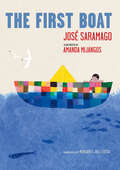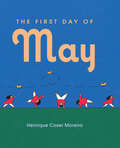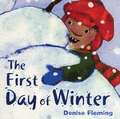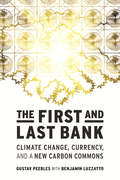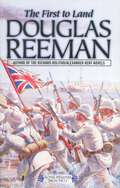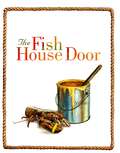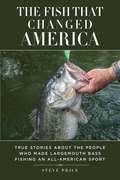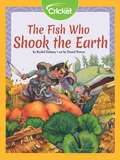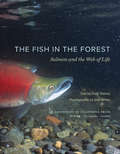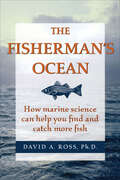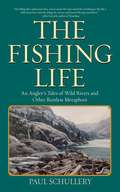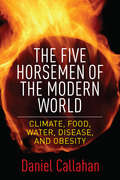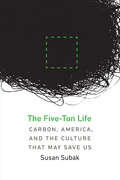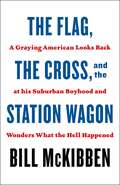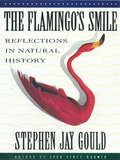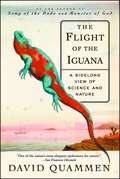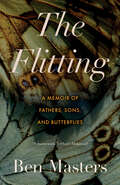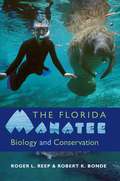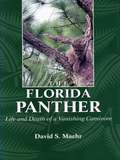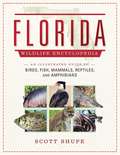- Table View
- List View
The First Boat
by José SaramagoInternational award winner! A beautifully illustrated story book for kids 4-8 about the importance of nature and community, from Nobel Prize winner José Saramago.The sea is the universe close to us.Here is the story of a man who lives at the water's edge watching the rise and fall of the shoreline. It is the sea itself that gives him everything he needs to survive, and yet it will take courage to enter the sometimes roaring waters. The man knows that this sea that gives him everything, can also take it away, but with the help of friends and with patience, he knows the sea can be a balm and a source of life. A poetic story that will resonate with anyone who has spent time near the sea, listening to the sound of the waves.With bright and beautiful water color art by Amanda Mijangos, this simple story from the Notebooks of Nobelist Saramago, will excite and intrigue the youngest readers—and all of those who read along with them.
The First Day of May
by Henrique Coser MoreiraHere is a book to celebrate firsts. That first magical day of spring, when it seems the whole world is bursting with life. That first time bursting out of your house after being cooped up for SO long. Your first time on the swingset. Your first time seeing a butterfly. Your first time exploring the world with someone you love. From Henrique Coser Moreira comes a wordless ode to joy and discovery that will stir readers young and old. P R A I S E ★ "Pure joy." –BookPage (starred) ★ "All the delights of spring are found within the covers in this charming, wordless picture book." –School Library Journal (starred) ★ "Ivan Brunetti by way of Rowboat Watkins, and readers will sense the opportunities waiting just outside their own doors. A joyous adventure, bright and brimming with exuberance." –Booklist (starred) ★ "This wordless book celebrates—with abundant style—the arrival of spring… playful and exceptionally funny… A breath of fresh air, in more ways than one." –Horn Book (starred) "A quirky and buoyant romp through spring." –Kirkus "Wordless panels mix the whimsical and the mundane in depicting a child’s exuberant outdoor exploits on the titular first of May." –Publishers Weekly
The First Day of Winter
by Denise FlemingA snowman comes alive as the child building it adds pieces during the first ten days of winter.
The First Rule of Climate Club
by Carrie FirestoneAn eighth grader starts a podcast on climate activism and rallies her friends to create lasting change in their local community and beyond, in this companion to Dress Coded.When Mary Kate Murphy joins a special science pilot program focused on climate change, the class opens her eyes to lots of things she never noticed before about her small suburban town: Kids waste tons of food at school without a second thought. Parents leave their cars running in the pick-up lane all the time. People buy lots of clothes they don&’t really need. Some of her friends who live in the city and are bused to her school don&’t always feel included. And the mayor isn&’t willing to listen to new ideas for fixing it all. Mary Kate and her friends have big plans to bring lasting change to their community and beyond. And now is the time for the young people to lead and the leaders to follow—or get out of the way.
The First and Last Bank: Climate Change, Currency, and a New Carbon Commons (One Planet)
by Gustav PeeblesA groundbreaking approach to currency and community that may allow us to seize carbon from the atmosphere—and offer a new tool in the fight against climate change.Through the ages, currencies have been based on all manner of objects—from tobacco leaves to salt to gold to collateralized debt obligations. The only thing that this odd assortment of objects shares is the communal belief that these objects could harness and direct economic growth—that they are, in a sense, fertile. In The First and Last Bank, Gustav Peebles and Benjamin Luzzatto propose that atmospheric carbon could be seen anew as fertile in this same sense. In other words, carbon, rather than loom as waste in our skies, could instead be &“drawn down&” to the earth by millions of currency users and the communally owned banks they rely on, where it could serve as a foundation of new biological life.Seeing currency as a powerful tool for collective action, the authors argue that dovetailing developments in digital currencies and the biosequestration of carbon have, together, made a new and radical intervention in the climate battle possible: a nonproprietary currency backed by sequestered carbon. This new currency would be managed via Wikipedia-style open-source policies that privilege sustainability and equity over endless growth and pollution. Because it is backed by sequestered carbon, the use of the currency would draw gaseous carbon out of the atmosphere and push it back into the ground, following the exact same trajectory as gold during the era of the international gold standard. While it is no silver bullet, such a currency would act as a necessary complement to wide-scale mitigation efforts, at the same time engaging ordinary citizens in the fight to reduce the dangerous levels of carbon in our atmosphere.
The First to Land
by Douglas ReemanCaptain David Blackwood is embroiled in the Boxer Rebellion. Ordered to escort a beautiful German countess on a dangerous journey up the Hoshun River, Blackwood sees death and slaughter unlike anything he has known. Finally, standing before the walls of Tientsin, he must hold on against a torrent of frenzied Chinese warriors.
The Fish House Door
by Robert BaldwinShawn comes from a long line of island lobstermen. His father, grandfather, and great-grandfather have all hauled traps, baited pockets, painted buoys, and cleaned their brushes on the door of the same fish house for decades. To Shawn, it's just a weathered old piece of wood with broken hinges. But when an art dealer comes to visit, he gives Shawn a new perspective on the fish house door, and a fresh look at the people and traditions that have shaped his past and will chart his future. The Fish House Door, illustrated by rising star Astrid Sheckels, won the 2010 Moonbeam Award (Gold Medal) for Best Picture Book in the All Ages category.
The Fish That Changed America: True Stories about the People Who Made Largemouth Bass Fishing an All-American Sport
by Steve Price Slaton L White Kevin VandamFrom boats and baits to rods and reels to tips and tactics, bass fishing has been a magnet of innovation for almost a century.Bass fishing changed from pastime to business in part because of competitive tournaments and the publicity they generated. That publicity, in turn, sparked a demand for more and more information from the tournament fishermen themselves--how they caught bass--so in essence, the sport fed upon itself. Author Steve Price has interviewed dozens of anglers over the past few years, and he fits each of their stories into a complicated puzzle that forms a comprehensive tale of competitive record holders and fishing industry insiders alike.The Fish That Changed America is not simply about tournament bass fishing, although some of the stories included here do involve competitive anglers. Rather, Price has tried to embrace a wider view of the entire sport and to show how different facets of bass fishing meshed so perfectly at the same time, leading to the state of the industry today. The participants--those who laid the foundation for what all bass anglers today enjoy--tell their own stories of what happened during those not-so-long-ago years. Many of the stories, such as the standing room-only funeral for a famous largemouth bass, touch on far-ranging topics that all anglers will enjoy.
The Fish Who Shook the Earth
by Rachel DelaneyKashima, a god in Edo, Japan, resides in his shrine to protect the people from Namazu, a catfish, from causing earthquakes that devastate the lives of the villagers. When Kashima helps one of the villagers, Namazu must decide whether to obey Kashima and stay put or swim and potentially endanger the lives of the villagers.
The Fish in the Forest
by Dale StokesThe Fish in the Forest is an elegantly written, beautifully illustrated exploration of the complex web of relationships between the salmon of the Pacific Northwest and the surrounding ecosystem. Dale Stokes shows how nearly all aspects of this fragile ecosystem--from streambeds to treetops, from sea urchins to orcas to bears, from rain forests to kelp forests--are intimately linked with the biology of the Pacific salmon. Illustrated with 70 stunning color photographs by Doc White, The Fish in the Forest demonstrates how the cycling of nutrients between the ocean and the land, mediated by the life and death of the salmon, is not only key to understanding the landscape of the north Pacific coast, but is also a powerful metaphor for all of life on earth.
The Fisherman's Ocean: How Marine Science Can Help You Find and Catch More Fish
by David A Ross PhDThis volume &“clearly explains how marine science can help saltwater anglers catch more and bigger fish . . . comprehensive yet accessible&” (Booklist). Here at last, in layman&’s terms, is a fisherman's guide to the habitat and behavior of saltwater fish. The author, an oceanographer and avid fly fisherman, explains the marine environment and the factors that affect where game fish congregate—everything from how they move with tides and currents to what they see, smell, taste, and hear. The copiously illustrated text covers inshore and offshore habitat and will prove invaluable to anyone who fishes in saltwater, whether in the surf, on the flats, or out at sea. The ocean is vast. It pays to be educated.
The Fishing Life: An Angler's Tales of Wild Rivers and Other Restless Metaphors
by Paul SchulleryThe Fishing Life is an entertaining anthology of fishing anecdotes and well-researched articles from across Paul Schullery’s research and fishing career. The author offers up stories, essays, farces, daydreams, and ruminations that will engage readers of all kinds.Of course, being a fisherman and living the fishing life goes beyond just those days spent with rod and reel in hand. It is something that occupies your mind and your heart, not just your hands. As such, this collection is not only about intense fishing moments, but also “a book about those long stretches of thinking, hoping, daydreaming, and otherwise getting ready that occupy fishermen between those moments.” It is truly a way of life.Whether you’re looking for informal advice or deep reflections related to the sport and art of fishing, The Fishing Life is sure to catch your fancy—and give you plenty to dream about, when you can’t be on the water.
The Fishmeal Revolution: The Industrialization of the Humboldt Current Ecosystem
by Kristin A. WintersteenOff the Pacific coast of South America, nutrients mingle with cool waters rising from the ocean’s depths, creating one of the world’s most productive marine ecosystems: the Humboldt Current. When the region’s teeming populations of fish were converted into a key ingredient in animal feed—fishmeal—it fueled the revolution in chicken, hog, and fish farming that swept the United States and northern Europe after World War II.The Fishmeal Revolution explores industrialization along the Peru-Chile coast as fishmeal producers pulverized and exported unprecedented volumes of marine proteins to satisfy the growing taste for meat among affluent consumers in the Global North. A relentless drive to maximize profits from the sea occurred at the same time that Peru and Chile grappled with the challenge of environmental uncertainty and its potentially devastating impact. In this exciting new book, Kristin A. Wintersteen offers an important history and critique of the science and policy that shaped the global food industry.
The Five Horsemen of the Modern World: Climate, Food, Water, Disease, and Obesity
by Daniel CallahanIn recent decades, we have seen five perilous and interlocking trends dominate global discourse: irreversible climate change, extreme food and water shortages, rising chronic illnesses, and rampant obesity. Why can't we make any progress in counteracting these problems despite vast expenditures of intellectual, institutional, and social capital? What makes these global emergencies the "wicked problems" that resist our best efforts and only grow more daunting?Daniel Callahan, noted author and the nation's preeminent scholar in bioethics, examines these global problems and shines a light on the institutions, practices, and actors that block major change. We see partisan political and ideological forces, old-fashioned hucksters, and trumped-up scientific disagreements but also the problem of modern progress itself. Obesity, anthropogenic climate change, degenerative diseases, ecological degradation, and global famine are often the unintended consequences of unchecked industrial growth, insatiable eating habits, and technologically extended life spans. Only through well-crafted political, regulatory, industrial, and cultural counterstrategies can we change enough minds to check these threats. With big thinking on issues that are usually evaluated separately, this book is sure to scramble partisan divides and provoke unusual, heated debate.
The Five-Ton Life: Carbon, America, and the Culture That May Save Us (Our Sustainable Future)
by Susan SubakAt nearly twenty tons per person, American carbon dioxide emissions are among the highest in the world. Not every American fits this statistic, however. Across the country there are urban neighborhoods, suburbs, rural areas, and commercial institutions that have drastically lower carbon footprints. These exceptional places, as it turns out, are neither “poor” nor technologically advanced. Their low emissions are due to culture. In The Five-Ton Life, Susan Subak uses previously untapped sources to discover and explore various low-carbon locations. In Washington DC, Chicago suburbs, lower Manhattan, and Amish settlements in Lancaster County, Pennsylvania, she examines the built and social environment to discern the characteristics that contribute to lower greenhouse-gas emissions. The most decisive factors that decrease energy use are a commitment to small interiors and social cohesion, although each example exhibits its own dynamics and offers its own lessons for the rest of the country. Bringing a fresh approach to the quandary of American household consumption, Subak’s groundbreaking research provides many pathways toward a future that is inspiring and rooted in America’s own traditions.
The Flag, the Cross, and the Station Wagon: A Graying American Looks Back at His Suburban Boyhood and Wonders What the Hell Happened
by Bill McKibbenBill McKibben—award-winning author, activist, educator—is fiercely curious. “I’m curious about what went so suddenly sour with American patriotism, American faith, and American prosperity.”Like so many of us, McKibben grew up believing—knowing—that the United States was the greatest country on earth. As a teenager, he cheerfully led American Revolution tours in Lexington, Massachusetts. He sang “Kumbaya” at church. And with the remarkable rise of suburbia, he assumed that all Americans would share in the wealth.But fifty years later, he finds himself in an increasingly doubtful nation strained by bleak racial and economic inequality, on a planet whose future is in peril.And he is curious: What the hell happened?In this revelatory cri de coeur, McKibben digs deep into our history (and his own well-meaning but not all-seeing past) and into the latest scholarship on race and inequality in America, on the rise of the religious right, and on our environmental crisis to explain how we got to this point. He finds that he is not without hope. And he wonders if any of that trinity of his youth—The Flag, the Cross, and the Station Wagon—could, or should, be reclaimed in the fight for a fairer future.
The Flamingo's Smile: Reflections in Natural History
by Stephen Jay Gould"Gould himself is a rare and wonderful animal--a member of the endangered species known as the ruby-throated polymath. . . . [He] is a leading theorist on large-scale patterns in evolution . . . [and] one of the sharpest and most humane thinkers in the sciences." --David Quammen, New York Times Book Review
The Flight of the Iguana: A Sidelong View of Science and Nature
by David QuammenAs he examines everything from species survival on islands to vegetarian piranhas, Quammen's funny and offbeat essays offer a unique glimpse of the natural world and, at the same time, clarify the larger biological issues and their effect on humankind.
The Flight of the Iguana: A Sidelong View of Science and Nature
by David QuammenFrom the award-winning author of The Tangled Tree and The Song of the Dodo comes a collection of essays in which various weird and wonderful aspects of nature are examined.From tales of vegetarian piranha fish and voiceless dogs to the scientific search for the genes that threaten to destroy the cheetah, Quammen captures the natural world with precision. Throughout, he illuminates the surprising intricacies of the natural world, and our human attitudes towards those intricacies. A distinguished essayist, Quammen&’s reporting is masterful and thought provoking and his curiosity and fascination with the world of living things is infectious.
The Flightless Traveller: 50 modern adventures by land, river and sea
by Emma GreggDiscover how to explore our beautiful world sustainably and responsibly with this trailblazing guide to flight-free travel. Seeking options that are enjoyable and kind to the planet, award-winning travel writer Emma Gregg shows you how to get a no-fly holiday off the ground.The Flightless Traveller presents 50 inspirational, life-affirming trip ideas for those who would like to fly less, or not at all. They include eco-friendly city breaks and coastal retreats, bike rides and sailing voyages, short jaunts on vintage railways and incredible intercontinental journeys.Some shed new light on wonderful, well-known places. Others reveal destinations, activities and experiences you might have never considered before. Best of all, they make the journey an essential part of the adventure.Get ready to recapture the authentic spirit of travel as you plan your next trip by land, river or sea.
The Flitting: A Memoir Of Loss And Butterflies
by Ben Masters"A book with wings."—Ali Smith A deeply felt and moving memoir about how butterflies become a vital connection between a son and his dying father. The Flitting: A Memoir of Fathers, Sons, and Butterflies is a masterful and touching memoir blending natural history, pop culture, and literary biography—delivering a richly layered and nuanced portrait of a son’s attempt, after years of stubborn resistance, to take on his dying father’s love of the natural world. With his father unable to leave the house and follow the butterfly cycle for the first time since he was a child, Masters endeavors to become his connection to the outdoors and his treasured butterflies, reporting back with stories of beloved species—Purple Emperors, Lulworth Skippers, Wood Whites and Silver-studded Blues—and with stories of the woods and meadows that are their habitats and once were his. Structured around a series of exchanges and remembrances, butterflies become a way of talking about masculinity, memory, generational differences, and ultimately loss and continuation. Masters takes readers on an unlikely journey where Luther Vandross and The Sopranos rub shoulders with the likes of Angela Carter and Virginia Woolf on butterflies and gender; the metamorphoses of Prince; Zadie Smith on Joni Mitchell and how sensibilities evolve; and the lives and works of Vladimir Nabokov and other literary lepidopterists. In this beautiful debut memoir, Ben Masters offers an intensely authentic, unforgettable portrait of a father and son sharing passions, lessons, and regrets before they run out of time.
The Florida Manatee: Biology and Conservation
by Roger L Reep Robert K BondeMuch of what we know about manatee biology and behavior has been learned in the years after they were first declared an endangered species in 1967. Roger Reep and Robert Bonde have been at the forefront of manatee research for more than two decades. The Florida Manatee offers an engaging, accessible introduction to everything manatee, including communication, diet, long-distance migration, and much more.Publication of the hardcover edition birthed a slew of national newspaper stories on manatee intelligence appearing in publications ranging from the New York Times to the Pittsburgh Post-Gazette as well as dailies throughout Florida. The Florida Manatee is perfect for anyone seeking the most comprehensive, up-to-date information on this fascinating marine mammal.
The Florida Panther: Life And Death Of A Vanishing Carnivore
by David MaehrWhen the first field study of the Florida panther took place in 1973, so little was known about the animal that many scientists believed it was already extinct. During more extensive research conducted from 1981 to 1986, panthers were proven to exist, but the handful of senile, anemic, and parasite-infested specimens that were captured indicated a grim future. During those early years a remarkably enduring image of the panther was born, and despite voluminous data gathered over the next decade that showed the panther to be healthy, long-lived, and reproducing, that earlier image has yet to be dispelled. For nine years, biologist David S. Maehr served as project leader of the Florida Panther Study Project, helping to gather much of the later, surprisingly positive data. In The Florida Panther, he presents the first detailed portrait of the animal -- its biology, natural history, and current status -- and a realistic assessment of its prospects for survival. Maehr also provides an intriguing look at the life and work of a field biologist: how captures are made, the intricacies of radio-telemetry tracking, the roles of various team members. He describes the devastating intrusion of politics into scientific work and examines controversial efforts to establish a captive breeding program and to manipulate the Florida panther's genetic stock with the introduction of relatives from west Texas. Protection of high-quality habitat, much of it in the hands of private landowners, is the key to the long-term survival of the Florida panther. Unless agency decisionmakers and the public are aware of the panther's true situation, little can be done to save it. This book will play a vital role in correcting widespread misconceptions about the panther's current condition and threats to its survival.
The Florida Wildlife Encyclopedia: An Illustrated Guide to Birds, Fish, Mammals, Reptiles, and Amphibians
by Scott ShupeFlorida’s wildlife has always played an important role in the history of human beings inhabiting the state. Native Americans depended on birds, mammals, and fish for sustenance. The state’s first European explorers encountered new and intimidating species like the American Alligator and the Eastern Diamondback Rattlesnake. In later years “plume hunters,” ventured into the Florida wilderness in search of enormous rookeries of herons and egrets, killing an abominable number of birds for feathers that were used to adorn the hats of fashionable ladies. Meanwhile the American Alligator was hunted to near extinction for its tough, scaly hide that made durable leather for luggage and boots. Although the state’s wildlife is still an important resource for human consumption, wildlife is also increasingly important in today’s culture for its intrinsic, aesthetic value. For many Floridians, the age-old traditions of hunting and fishing have been replaced by a desire to simply observe wildlife and experience nature. But most Floridians are largely unaware of the diversity of species inhabiting their state. This volume is intended to provide an introduction to the state’s fresh water fishes, amphibians, reptiles, birds, and mammals. In Florida Wildlife Encyclopedia, nationally known naturalist Scott Shupe has collected information on all the native wildlife that reside in the Sunshine State. The fifth in a series of state wildlife encyclopedias, this book will be a handy, usable, layman’s guide to Florida’s native wildlife. Included are over 700 color photographs, depicting the different species of mammals, reptiles, amphibians, birds, and fish, while also offering over 600 range maps to show their territory. Along with basic information for the biology of each animal, Shupe includes the size, habitat, and abundance of each species located in the state. Whether you’re a lover of the outdoors, photography, or are looking to learn more about your state, this comprehensive guide will teach you about the wonderful wildlife that covers the water, earth, and skies of Florida.
The Flower Alphabet Book (Jerry Pallotta's Alphabet Books)
by Jerry PallottaRoses are red,Violets are blue...And they're only two of the flowers in this book of bright colors and delightful information. Young readers will be fascinated to find out what flower can be used to make a doll, which flower flavors tea, and which flower farmers feed to chickens.Author Jerry Pallotta and illustrator Leslie Evans have collaborated to produce a stunning bouquet of words and pictures about the world of flowers–one of nature's most beautiful gifts.
